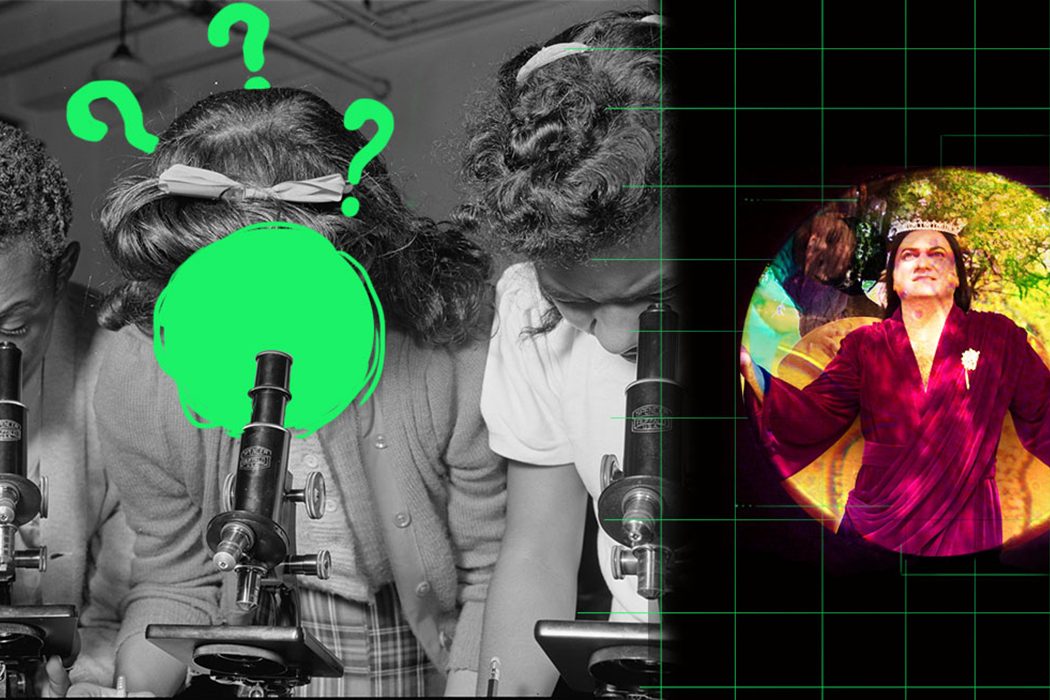There is more to Taher Shah’s absurd videos than meets the (essential, sensational) eye.
Is he for real?This is the question I keep on asking myself as I watch and re-watch the videos of Pakistani YouTube sensation Taher Shah, and pore over his website. Perhaps you’ve already forgotten Shah; the viral fever he induced seems to have passed. I’ve seen little mention of him on Facebook and on the web in the past of couple weeks. But he had a real moment of glory in early April, when he released his video ‘Angel’, a bizarre, schmaltzy ballad accompanied by visuals of Shah and an unidentified woman and child dressed up as, well, angels. The video had surprisingly high production value and many questionable aesthetic choices, from exposed chest hair to inexplicable magic wands.
This was only the second video Shah has ever released; his first, 2013’s ‘Eye to Eye’, was also a viral sensation, though it did not quite reach the heights of ‘Angel’. Both videos were followed by a profusion of snarky internet comments and incredulous news articles on Shah’s Internet fame. Some reporters were even lucky enough to snag interviews with the elusive Shah.
But these hardly shed any light on who, exactly, Taher Shah is. His website says that he is a “businessman” with no further elaboration. In an early interview with Dawn, he repeatedly refused to disclose information about his personal life, only giving the barest outline of his identity; he owns a “public limited company,” spent some time abroad, and may or may not be single. This interviewer, and many others, have responded to Shah with a mix of admiration for his seemingly boundless self-confidence and relentlessly positive attitude, and bemusement at his extravagant aesthetic.
What is remarkable about all these interviews—as well as the general social media reaction—is that they have taken Taher Shah at face value.
What is remarkable about all these interviews—as well as the general social media reaction—is that they have taken Taher Shah at face value. They assume that, however absurd and bizarre his videos, Shah himself must be deadly serious and sincere, firm in his belief that he is inspiring his fans to see deep spiritual and romantic truths. BBC’s coverage of ‘Angel’ briefly entertains the notion that Shah’s persona may in fact be a parody, before concluding, “This is no joke. Taher Shah says he is a serious artist.” When did journalists become so trusting? (Perhaps pop culture journalists are held to different standards.)
In this column, I have repeatedly mused about the nature of the “camp” aesthetic: the adulation of works of art that are so bad they’re good. Taher Shah is certainly producing campy work, which the cultural critic Susan Sontag has described as a mix of “the exaggerated, the fantastic, the passionate, and the naïve.” In the Indian context, perhaps the most well known example of camp is Gunda, the Mithun Chakraborty-starrer full of kung-fu trained goons with submachine guns and cringe-worthy dialogue. Gunda is an example of what the Sontag has termed “naïve camp”; that is, it is not intentionally trying to be extravagantly bad. It takes itself seriously, which makes it all the more fun to ridicule. (It is generally an elite audience doing the ridiculing, and camp enjoyment thus often has an uncomfortable class angle to it.)
In addition to “naïve camp,” there is also, according to Sontag, “Camp which knows itself to be Camp (‘camping’),” which “is usually less satisfying.” A prime example of this is the Indian YouTube superstar Wilbur Sargunaraj, whose exploits I have analysed a couple times for this column. Sargunaraj presents himself as a simple country boy from rural Tamil Nadu, but in fact he is the creation of a Canadian NRI named Paul Benjamin. Much of Sargunaraj’s comedy turns on his enthusiastic but broken English; one feels a bit cheated when one finds out all of this is just an act.
Taher Shah is certainly producing campy work, which the cultural critic Susan Sontag has described as a mix of “the exaggerated, the fantastic, the passionate, and the naïve.”
So is Taher Shah an example of naïve camp, or is he just camping? My suspicion is the latter, even though all other accounts of him have assumed the former. If I am right, then he is clearly much more skillful than Sargunaraj/Benjamin, both in hiding his real identity, and in disguising the nature of his parody. Sargunaraj’s video have telltale signs of his act: the retro neon logo that reeks of modern-day hipsterdom, the exaggerated silliness of the accent, the brief moments of musical genius that make it clear that the low-fi aesthetic is simply a façade.
Taher Shah, though, is not going for a kind of hip silliness. He is going for something much more weird—something that (if intentional) verges on the avant-garde or the Dadaist, a truly inexplicable combination of words, music and images. True, there is an aspect of retro nostalgia, especially in the décor and costumes of the ‘Eye to Eye’ video; this, though, has been totally eschewed in the ‘Angel’ video. Perhaps Shah is perfecting his craft.
Shah has generally been tight-lipped about his personal life, but his website gives some hints that is, perhaps, an elaborate, expertly-crafted joke. His website boasts of the World Records he holds, but, upon closer inspection, these records are absurd, even surreal. One is from an American website called Record Setter, which allows people from around the world to submit their own records, which the site then approves. According to this dubious website, Shah holds the world record for “Most Appearances of the Word ‘Eye’ in the Lyrics of a Song” (60 times, in case you were wondering). This seems like it must be the creation of someone with a keen sense of the absurd, someone who is in on the joke himself—in short, someone who is merely playing at camp, and having a laugh at our expense, even though, all the while, we think that Shah is the object of ridicule.
If I am right, then he is clearly much more skillful than Sargunaraj/Benjamin, both in hiding his real identity, and in disguising the nature of his parody.
And yet, life on the subcontinent is crazy enough to make one doubt this conclusion. Back in India, after all, there are the antics of controversial godman Saint Gurmeet Ram Rahim Singh Ji Insan, perhaps best known in the pop culture landscape for his two gloriously campy movies, MSG: The Messenger and MSG 2: The Messenger. But before that, he shot to viral fame because of his music videos, notably the psychedelic ‘Love Charger’. On his website, the saint boasts of—what else—his world records. These, at least, seem more legitimate, in that they are certified by the Guinness Book of World Records. They are still silly, though: “Largest Vegetable Mosaic”, “Largest Human Droplet Formation”, and so on. And there is no doubt that the saint is practicing naïve camp, though perhaps a special mystic variety.
Is Shah aware of the saint? In some sense, it’s comforting to think that Shah is, despite appearances, a master satirist, skewering both the bizarre ambitions of the saint and the gullibility of the urbane social media world. But then, who knows? Shah’s genius lies in this ambiguity.



